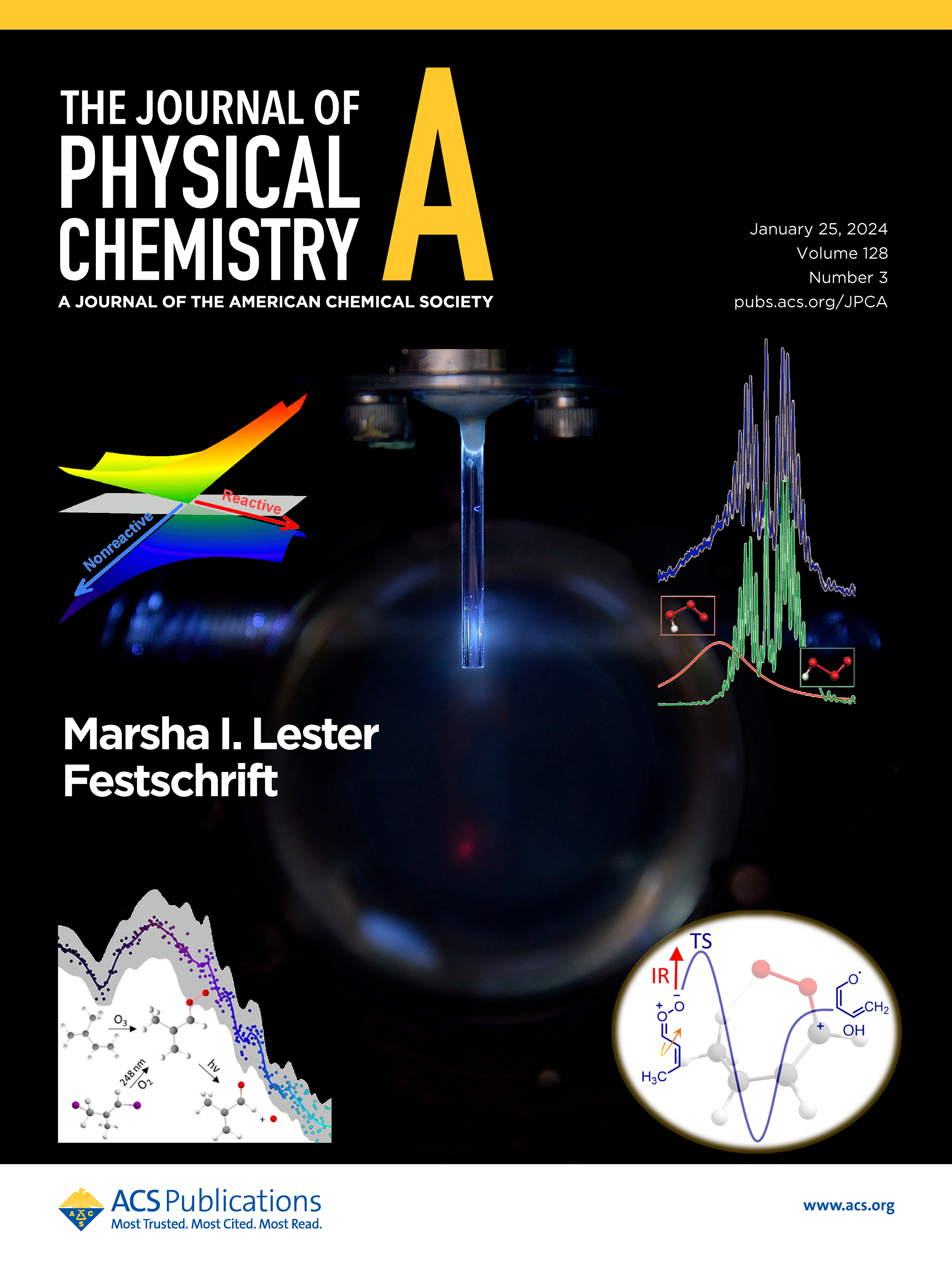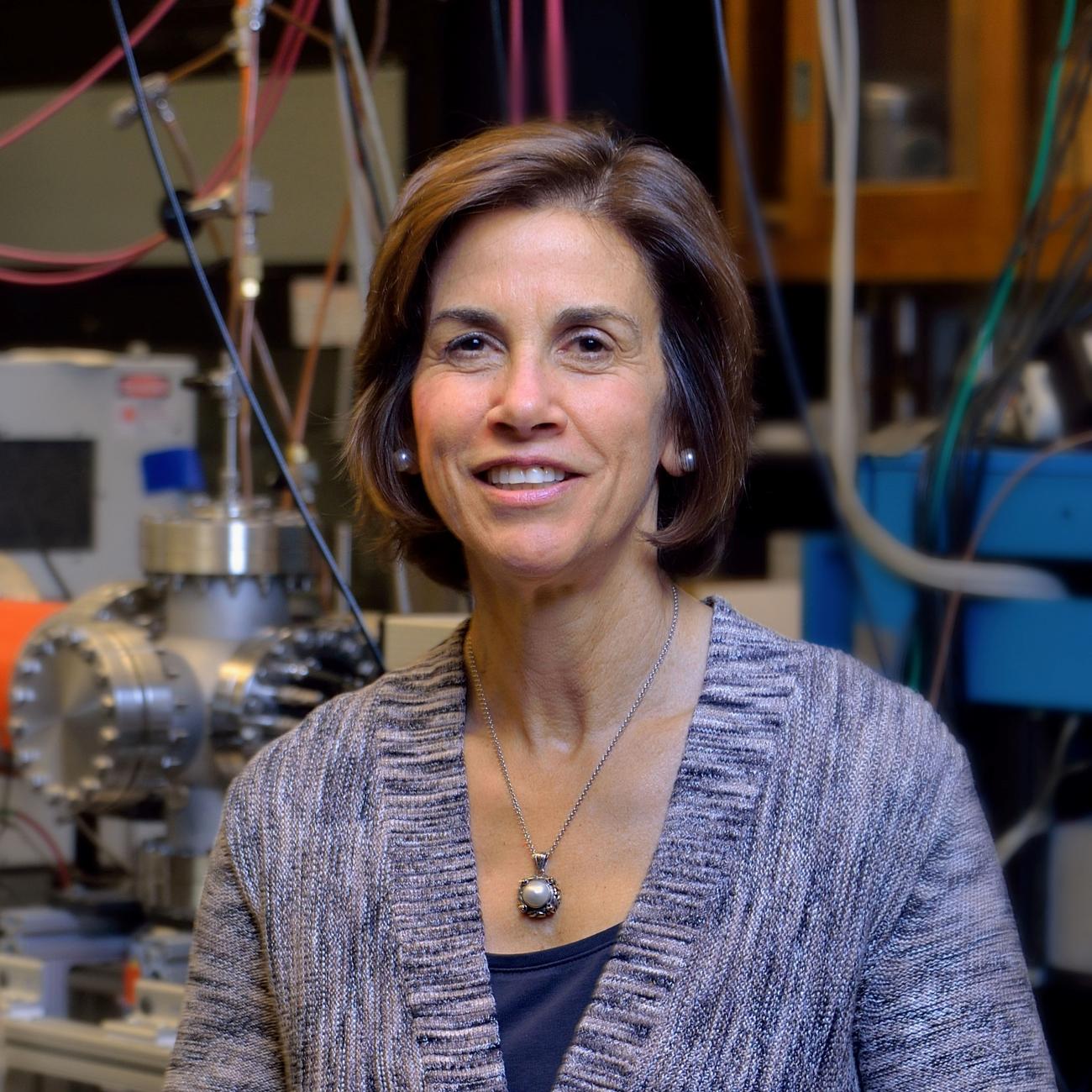Physical Chemistry, Molecular Structure and Dynamics
- B.A. Douglass College, Rutgers University (1976)
- Ph.D. Columbia University (1981)
- NSF Postdoctoral Fellow, AT&T Bell Laboratories (1981-82)
Honors and Awards
- Marsha I. Lester Festschrift in the Journal of Physical Chemistry A (2024)
- Establishment of the Marsha I. Lester Award for Exemplary Impact in Physical Chemistry (2022)
- Herbert P. Broida Prize, American Physical Society (2019)
- Philadelphia American Chemical Society Section Award (2018)
- Editor-in-Chief, The Journal of Chemical Physics (2009-2018)
- Member, National Academy of Sciences (2016)
- Francis P. Garvan-John M. Olin Medal, American Chemical Society (2014)
- Fellow, American Academy of Arts and Sciences (2008)
- Bourke Lectureship, Faraday Division of the Royal Society of Chemistry (2005)
- Guggenheim Fellowship (2002-03)
- Fellow of the American Physical Society (1993), the American Association for the Advancement of Science (1997), and the American Chemical Society (2010)
- Alfred P. Sloan Research Fellow (1987)
- Camille and Henry Dreyfus Teacher-Scholar Award (1986)
Research in the Lester group is focused on reaction intermediates that generate hydroxyl radicals (OH), often called the atmosphere’s detergent. The OH radical is one of the most powerful oxidizing agents in the troposphere, which reacts rapidly with other molecules, including most volatile organic compounds emitted in the atmosphere. Our studies have characterized transient carbonyl oxide intermediates, known as Criegee intermediates, in the chemical reaction pathways for alkene ozonolysis, an important non-photolytic source of OH radicals. Notably, we have investigated Criegee intermediates derived from ozonolysis of isoprene, the most abundant volatile organic compound emitted into the atmosphere after methane. Our studies have also revealed prototypical carbon-centered hydroperoxyalkyl radicals (•QOOH), critical intermediates in alkane oxidation of volatile organic compounds in the atmosphere and combustion of hydrocarbon fuels in low temperature (< 1000 K) environments, which regenerate OH radicals. Our experimental studies utilize (1) IR action spectroscopy with time-resolved IR pump-UV probe measurements of OH products, (2) UV-visible spectroscopy on very strong π*←π transitions as well as the resultant rapid dissociation along multiple potential energy surfaces utilizing velocity map imaging, and (3) flow cell kinetics with VUV photoionization detection. The latter enabled identification of unexpected products arising from novel roaming mechanisms. Our experimental studies and complementary theory reveal the chemical reaction pathways under controlled laboratory conditions as well as their impact in realistic atmospheric and combustion chemistry.

Cover image from Marsha I. Lester Festschrift
We gratefully acknowledge financial support from the National Science Foundation under Grant No. NSF CHE-2301298 and the Chemical Sciences, Geosciences and Biosciences Division, Office of Basic Energy Sciences, Office of Science, U.S. Department of Energy under Grant No. DE-FG02-87ER13792.
Y. Qian, T. K. Roy, D. S. Valente, E. Moya Cruz, M. C. Kozlowski, A. D. Libera, S. J. Klippenstein, and M. I. Lester, “Infrared fingerprint and unimolecular decay dynamics of the hydroperoxyalkyl intermediate (•QOOH) in cyclopentane oxidation”, J. Phys. Chem. A 128, 9240–9250 (2024).
Y. Qian, T. K. Roy, A. W. Jasper, C. A. Sojdak, M. C. Kozlowski, S. J. Klippenstein, and M. I. Lester, “Isomer-Resolved Unimolecular Dynamics of the Hydroperoxyalkyl Radical (•QOOH) in Cyclohexane Oxidation”, Proc. Natl. Acad. Sci. 121 (16) e2401148121 (2024).
T. Liu, S. N. Elliott, M. Zou, M. F. Vansco, C. A. Sojdak, C. R. Markus, R. Almeida, K. Au, L. Sheps, D. L. Osborn, F. A. F. Winiberg, C. J. Percival, C. A. Taatjes, R. L. Caravan, S. J. Klippenstein, and M. I. Lester, “OH Roaming and Beyond in the Unimolecular Decay of the Methyl-Ethyl Substituted Criegee Intermediate: Observations and Predictions”, J. Am. Chem. Soc. 145, 19405-19420 (2023).
A. S. Hansen, T. Bhagde, K. B. Moore III, D. R. Moberg, A. W. Jasper, Y. Georgievskii, M. F. Vansco, S. J. Klippenstein, and M. I. Lester, “Watching a Hydroperoxyalkyl Radical (•QOOH) Dissociate”, Science 373, 679-682 (2021)
M. F. Vansco, B. Marchetti, and M. I. Lester, “Electronic spectroscopy of methyl vinyl ketone oxide: A four-carbon unsaturated Criegee intermediate from isoprene ozonolysis”, J. Chem. Phys. 149, 244309 (2018).
V. P. Barber, S. Pandit, A. M. Green, N. Trongsiriwat, P. J. Walsh, S. R. Klippenstein, and M. I. Lester, “Four carbon Criegee intermediate from isoprene ozonolysis: Methyl vinyl ketone oxide synthesis, infrared spectrum, and OH production”, J. Am. Chem. Soc. 140, 10866–10880 (2018).
M. I. Lester and S. J. Klippenstein, “Unimolecular decay of Criegee intermediates to OH radical products: Prompt and thermal decay processes”, Acc. Chem. Res. 51, 978-985 (2018).
N. M. Kidwell, H. Li, X. Wang, J. M. Bowman, and M. I. Lester, “Unimolecular dissociation dynamics of vibrationally activated CH3CHOO Criegee intermediates to OH radical products”, Nat. Chem., 8, 509-14 (2016).
F. Liu, J. M. Beames, A. S. Petit, A. B. McCoy, and M. I. Lester, “Infrared-driven unimolecular reaction of CH3CHOO Criegee intermediates to OH radical products”, Science 345, 1596-1598 (2014).
J. M. Beames, F. Liu, L. Lu, and M. I. Lester, “Ultraviolet spectrum and photochemistry of the simplest Criegee intermediate CH2OO”, J. Am. Chem. Soc. (Communication) 134, 20045-48 (2012).

